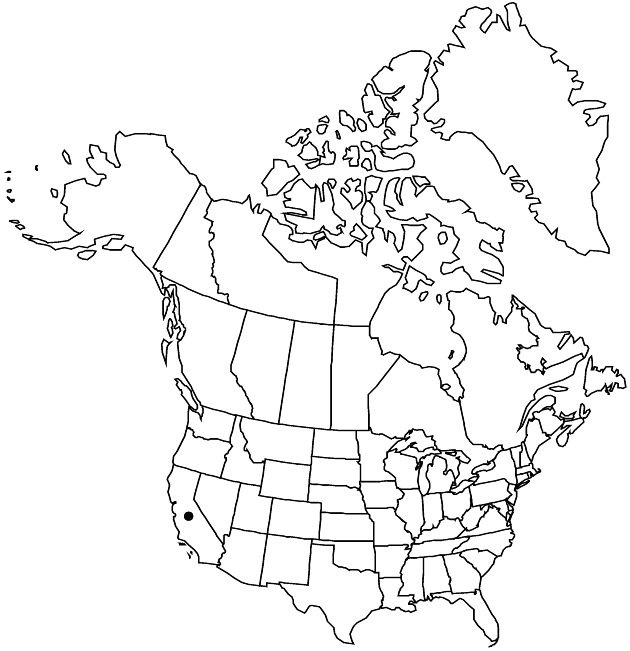familyAsteraceae
genusCentromadia
speciesCentromadia parryi
subspeciesCentromadia parryi subsp. congdonii
Difference between revisions of "Centromadia parryi subsp. congdonii"
Novon 9: 466. 1999.
EndemicConservation concern
Basionym: Hemizonia congdonii B. L. Robinson & Greenman Bot. Gaz. 22: 169. 1896
Synonyms: Hemizonia parryi subsp. congdonii (B. L. Robinson & Greenman) D. D. Keck Hemizonia parryi var. congdonii (B. L. Robinson & Greenman) Hoover
FNA>Volume Importer |
imported>Volume Importer |
||
| (One intermediate revision by the same user not shown) | |||
| Line 6: | Line 6: | ||
|place=9: 466. 1999 | |place=9: 466. 1999 | ||
|year=1999 | |year=1999 | ||
| + | }} | ||
| + | |special_status={{Treatment/ID/Special_status | ||
| + | |code=E | ||
| + | |label=Endemic | ||
| + | }}{{Treatment/ID/Special_status | ||
| + | |code=C | ||
| + | |label=Conservation concern | ||
}} | }} | ||
|basionyms={{Treatment/ID/Basionym | |basionyms={{Treatment/ID/Basionym | ||
| Line 60: | Line 67: | ||
|publication title=Novon | |publication title=Novon | ||
|publication year=1999 | |publication year=1999 | ||
| − | |special status= | + | |special status=Endemic;Conservation concern |
| − | |source xml=https:// | + | |source xml=https://bitbucket.org/aafc-mbb/fna-data-curation/src/2e0870ddd59836b60bcf96646a41e87ea5a5943a/coarse_grained_fna_xml/V19-20-21/V21_681.xml |
|tribe=Asteraceae tribe Heliantheae | |tribe=Asteraceae tribe Heliantheae | ||
|subtribe=Asteraceae (tribe Heliantheae) subtribe Madiinae | |subtribe=Asteraceae (tribe Heliantheae) subtribe Madiinae | ||
Latest revision as of 20:13, 5 November 2020
Leaves (and peduncular bracts) glabrous or ± hirsute, seldom glandular (sometimes with yellowish, minute, stipitate glands among eglandular hairs). Involucres 4–9 mm. Paleae lacking purple lines. Ray laminae 2.5–3(–4.5) mm. Anthers yellow or brownish. 2n = 24.
Phenology: Flowering Jun–Oct.
Habitat: Terraces, swales, flood plains, often ± alkaline sites, grasslands, disturbed sites (e.g., fallow fields)
Elevation: 0–300 m
Discussion
Of conservation concern.
Subspecies congdonii is found in the South Coast Ranges and San Francisco Bay area. Molecular and morphologic studies have indicated that the southern and northern populations are evolutionarily distinct and may warrant treatment as distinct taxa (B. G. Baldwin, unpubl.).
Selected References
None.
Lower Taxa
None.
